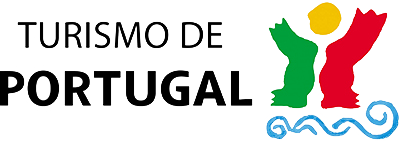PR & GO UP
Congressional Tourism in Italy: The relaunch continues.
Congressional tourism, like all sectors of Italian tourism, is gradually returning to pre-pandemic levels this year, and the recovery phase that began in 2021 has been consolidated in 2022. The recovery of the Italian congress industry emerges from the Italian Observatory of Congresses and Events-OICE, the research promoted by the meeting industry association Federcongressi&eventi and carried out by the Higher School of Economics and International Relations of the Catholic University of the Sacred Heart – ASERI.
The numbers of congressional tourism:
Presented in Rome at the headquarters of the Enit-National Tourism Agency, the ninth edition of the study highlights that in 2022 a total of 303,689 congresses and business events were held in Italy, recording an increase of 251.3% compared to 2021. The number of participants was 21,215,934 (+362.7% compared to 2021), and the number of attendees was 31,706,600 (+366.4% compared to 2021).
The data collected confirms that in 2022, congressional tourism has recovered over 70% of the events held in 2019, the last reference year before the pandemic. This massive recovery, which occurred despite the continued restrictions due to Covid-19 in the first quarter of last year and a complex and uncertain geopolitical context, confirms that congresses and events are essential opportunities for associations and companies to disseminate and share knowledge, communication, commercial promotion, and networking.
The positive trend in the sector in the first 6 months of this year, combined with equally positive forecasts for the second half, allow for a reasonable prediction that the gap compared to 2019 will be recovered in 2023, or even surpass the level of events recorded before the pandemic. The prospects for revenue are also good: over half of the venues, 52.7%, anticipate an increase compared to 2022.
Who organizes and participates in events:
Even in 2022, businesses were the main promoters. More than half of the events, 52.8%, were indeed corporate events such as conventions, meetings, and product launches. Events organized by associations, especially medical-scientific ones, accounted for 31.1%, while those organized by institutions accounted for 16.1%.
The persisting health restrictions in the early months of 2022 certainly impacted the origin of participants. In fact, the majority of events, 63.2%, had a local dimension, meaning that participants mainly came from the same region where the event took place. 28.5% had a national scope, and 8.3% were international.
Events and Conferences: Where They Take Place
The majority of conferences and events, 59%, took place in the North, an area that concentrates over half of the venues, 53%. In particular, the Northwest, with 96,826 events, recorded the highest increase compared to 2021 (+221.8%), recovering 74.6% of the events from 2019, while the Northeast hosted 82,538 events (69.7% of those in 2019), with a year-on-year increase of 214.2%. The Central region hosted 24.4% of the events, the South 10.4%, and the Islands 6.2%.
Regarding the venues for events, congress hotels remain the most utilized type, having hosted 77.3% of the total events. Congress centers and exhibition congress venues hosted 3.4% of the events, institutional venues 9%, unconventional spaces 6%, and non-hotel historic residences (abbeys, castles, ancient inns and farmhouses, historic palaces, villas, etc.) 2.5%
The most utilized venue types appear to be directly linked to the most prevalent type of events, namely corporate events. Hotels specifically cater to the needs of organizing meetings, training courses, and conventions, while congress centers, with their exhibition spaces, plenary halls, and subcommittee rooms, cater to the needs of association congresses.
Investments for competitiveness:
In 2022, event venues continued to make investments to increase their competitiveness and meet the renewed market demands. In 2023, they further strengthen their path of growth and development.
The planned investments this year particularly involve the refurbishment of internal spaces (planned by 30.4% of the respondent venues), the implementation of audio-video equipment (27.9%), staff training (26.2%), the development of promotion and/or communication tools (24%), the refurbishment of outdoor spaces (20.9%), and interventions for energy efficiency (20.9%).
The Scientific director of the Observatory, Roberto Nelli, professor of Marketing at the Catholic University, emphasizes:” 2022 was the year of the “comeback” of the Italian meeting industry: events have resumed their growth path vigorously – abruptly interrupted two years ago – and venues have re-engaged, triggering a virtuous process of development through investments in technological innovation, sustainability, and communication”.
“This is a segment that Enit consistently invests in for its growth. Italy, in terms of business tourism, ranks high in the ICCA (International Congress and Convention Association) global rankings: it is third globally and second in Europe with over 520 meetings, following Spain (528) and the USA (690), which holds the top position (Enit based on ICCA data). In 2022, approximately 85% of the meetings took place in place, around 9,000 out of a total of over 10,500. Rome and Milan rank fourteenth and eighteenth, respectively, with 79 and 66 meetings, while both cities move up one position in the European ranking.”
Blended Travel:
The future of travel increasingly combines leisure time and business. The blended formula (bussnes+ leisure) emerges from the Enit survey based on data from Forwardkeys, WTTC (Euromonitor forecasts) Bank of Italy Deloitte, and WTTC data (Trip.com) during the international trade fair IMEX 2023 from May 23rd to 25th in Frankfurt.
Already in 2021, there was a recovery in the business segment, which grew by +31% compared to 2020 levels when global spending on business travel had dropped by -56% compared to 2019. According to Skyscanner, one out of six respondents is inclined to accept combined trips: working on vacation is a strategic choice because “you have more time at the destination” (55%) and “it is more cost-effective, flying at quieter times” (51%), state the president and CEO of Enit, Ivana Jelinic, and Enit board member Sandro Pappalardo.



















